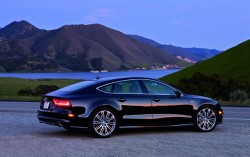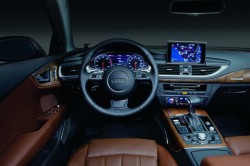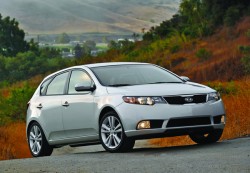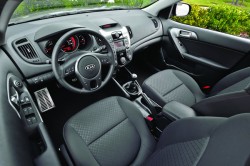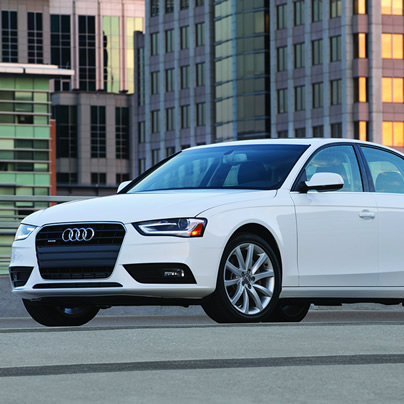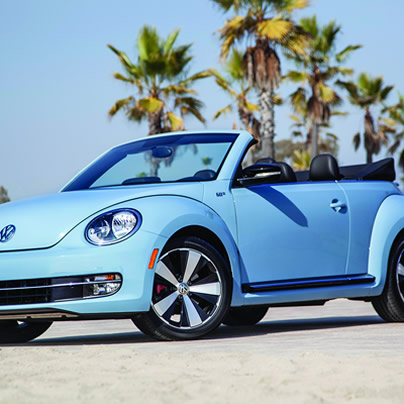Autos
Hot hatchbacks
Audi and Kia help fuel hatchback fever
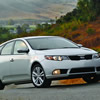
It’s hard to get excited about minivans, station wagons or other ho-hum haulers. But road trips in two different hatchbacks made us reconsider our prima donna ways. Not only were the Audi A7 and Kia Forte a blast to drive, each also offered plenty of good surprises despite being miles apart on price.
AUDI A7
$62,000
Mpg: 18 city/28 highway
0-to-60 mph: 5.4 seconds
Cargo space: 24.5 cu. ft.
There are better ways to spend 10 hours than sitting behind a steering wheel, even for auto journalists. But that was before we tested Audi’s all-new A7.
Funny, because this car wasn’t even on our must-drive list, especially since it meant giving up the Saab 9-5 Aero sedan, a ride so wicked good you wanted to reach into your pockets to help fund the bankrupt Swedish automaker yourself.
Yet there it was, a pearlescent black A7 that seemed to sit too low to the ground, didn’t have a large panoramic sunroof like most competitors and — horrors — came with frameless windows on the doors (just like any run-of-the-mill Subaru).
And this was the car we were taking on a 1,500-mile trek for a week?
No thanks. Or so we thought until halfway across Ohio when nirvana struck.
Maybe it was the flawless acceleration, with no herky-jerky turbo lag. Or the nifty fin-like spoiler, which rose up at 80 mph and made the A7 seem like something 007 would drive to outmaneuver a battery of bad guys. Or those BMW and Mercedes drivers who seemed to drool as the A7 cruised down the road.
Whatever it was, the A7 scored points all around. And no wonder: This is Audi’s best-looking vehicle ever and the most practical. The hatch opens and closes electronically. There’s plenty of easy-to-reach cargo space. And the car can be raised or lowered at the touch of a button for better handling.
A supercharged V6 growls seductively and despite churning out only 310 horsepower, still manages to rocket the A7 from 0 to 60 mph in just 5.4 seconds.
Compare the cockpit to a Mercedes, Jag or even a Bentley, and the A7 wins hands down. Acres of matte-finished wood — a nice change from the shiny, plasticized wood in other luxo-mobiles — complement the aluminum trim. Even the dials and gauges seem fresh and exciting, especially the large, Tron-like nav screen that opens magically from its hiding place in the dash. This nav system is tied to Google Earth and shows the speed limit on any road, a big plus as we traveled rural byways.
Yet despite plenty of must-have options, like LED lighting, they add up quickly, so expect to tack on $10,000 or more to the $62,000 sticker. Still, that’s a bargain for a car that could easily top six figures if it had a V8 or, perhaps, even a panoramic sunroof.
KIA FORTE SX
$19,000
Mpg: 22 city/32 highway
0-to-60 mph: 8.8 seconds
Cargo space: 19.4 cu. ft.
If an Audi is too rich for your blood, then Kia’s five-door Forte is a fine alternative. Yes, it’s a step down from the A7 in size, handling and performance. And the Forte’s two lower trim levels — the LX and EX — are lackluster, to say the least. But the sport-tuned SX packs a wallop, with its sprightly 173-hp engine and slick six-speed transmission (a notch up from the previous four-speed gearbox). The Forte’s new look showcases its sculpted sheet metal, just like the popular Kia Optima.
But this car isn’t perfect: Lower the rear seats and there’s a lot less cargo space than in the Audi A7, for example. Yet the Forte also costs way less and gets better gas mileage. And it fits anywhere, as we saw when nudging into a space on a narrow Baltimore street after two sedans and a coupe gave up on the spot.
Considering this is an entry-level compact, the Forte’s handling was tight and sure, especially on highways. And the cabin was quiet, even when passing SUVs and semis.
The Forte SX may not be as glam as an Audi A7, but it’s certainly the most fun in its class.
Autos
Revving up the holidays with auto-themed gifts
Lamps, mugs, headphones, and more for everyone on your list
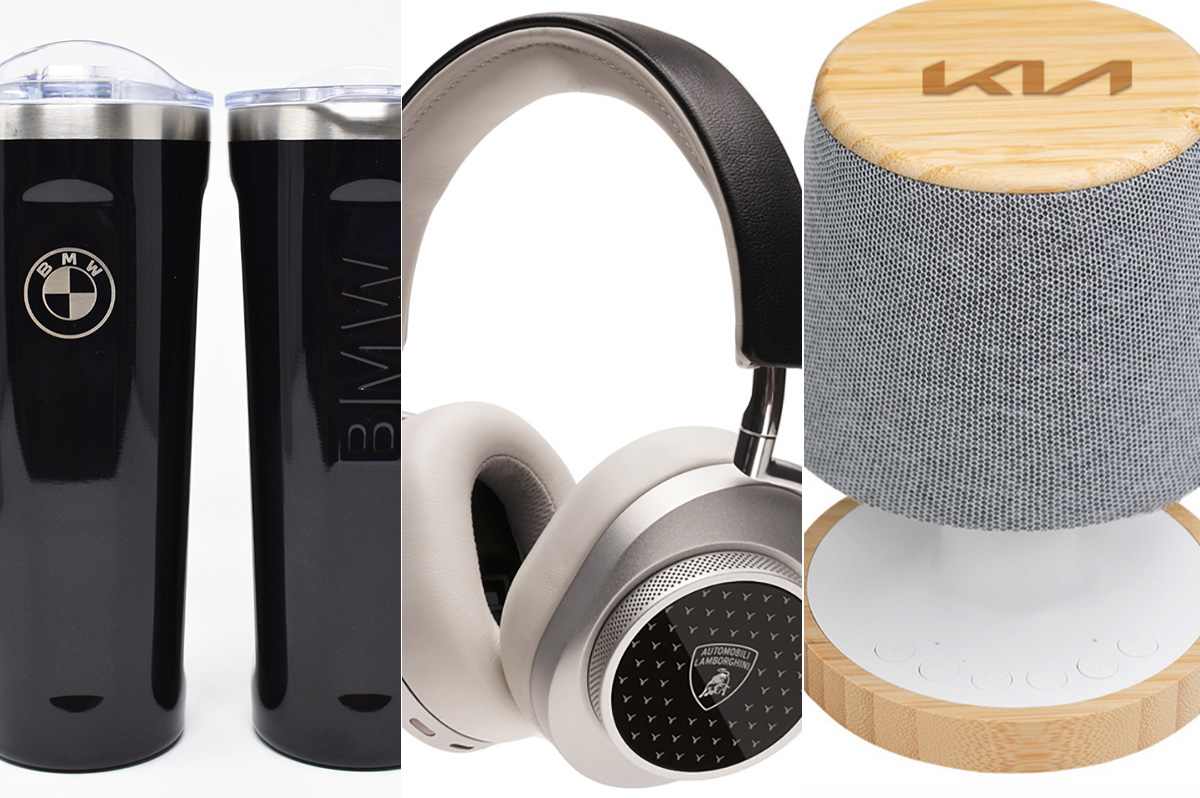
Here’s how to shift your holidays into high gear.
Bentley Bottle Stopper
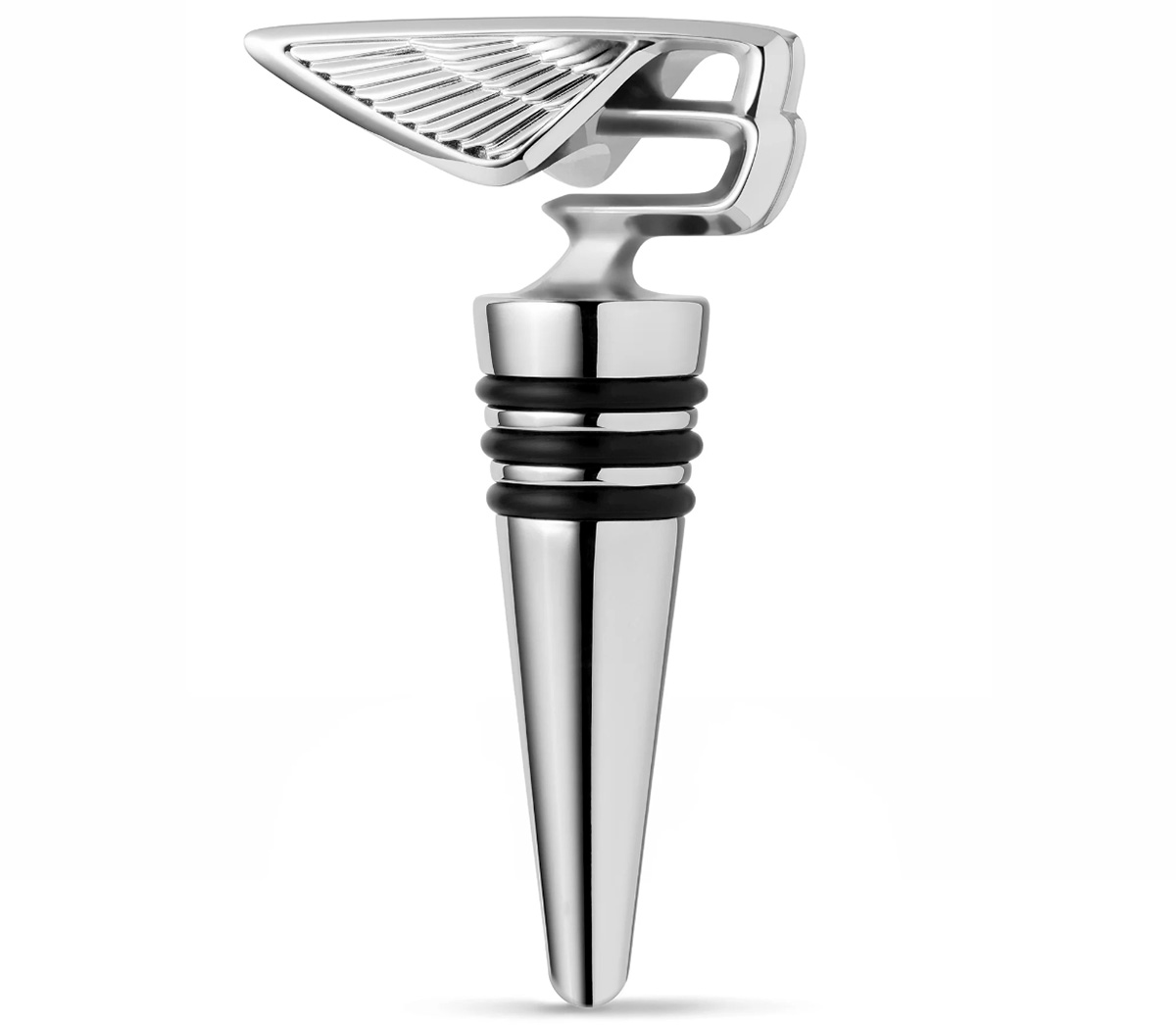
Pop your cork—in a good way—with a Bentley bottle stopper ($106), made of zinc alloy with chrome plating and rubber rings. The classy design is inspired by the automaker’s iconic “Flying B” mascot from 1930.
Subaru Motorsports Counter Stool
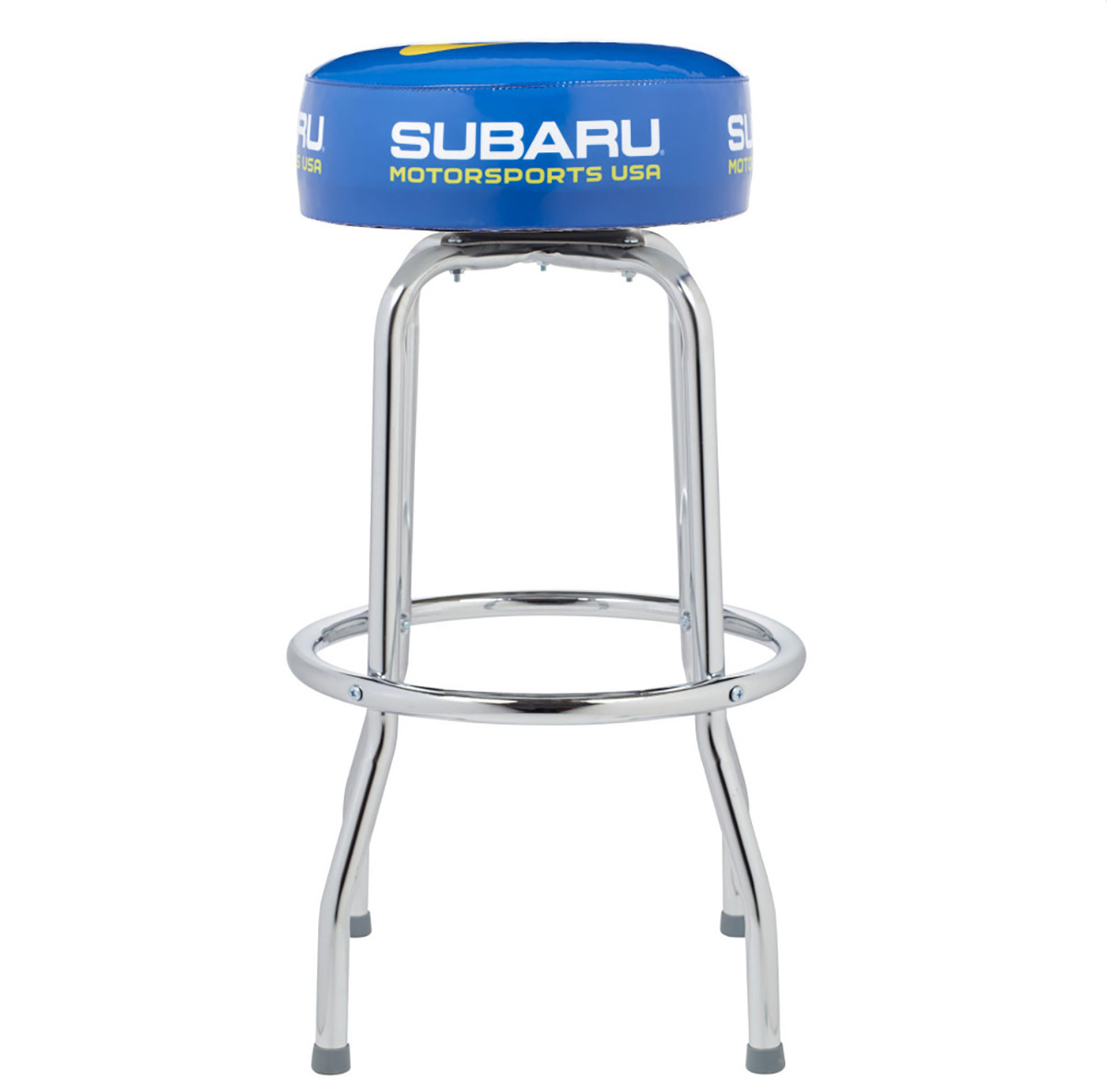
Belly up to the bar with the Subaru Motorsports Counter Stool ($175). The 30-inch-tall metal chair—with padded vinyl cover and automaker logo—is lightweight and swivels 360 degrees.
BMW Luxe Luggage
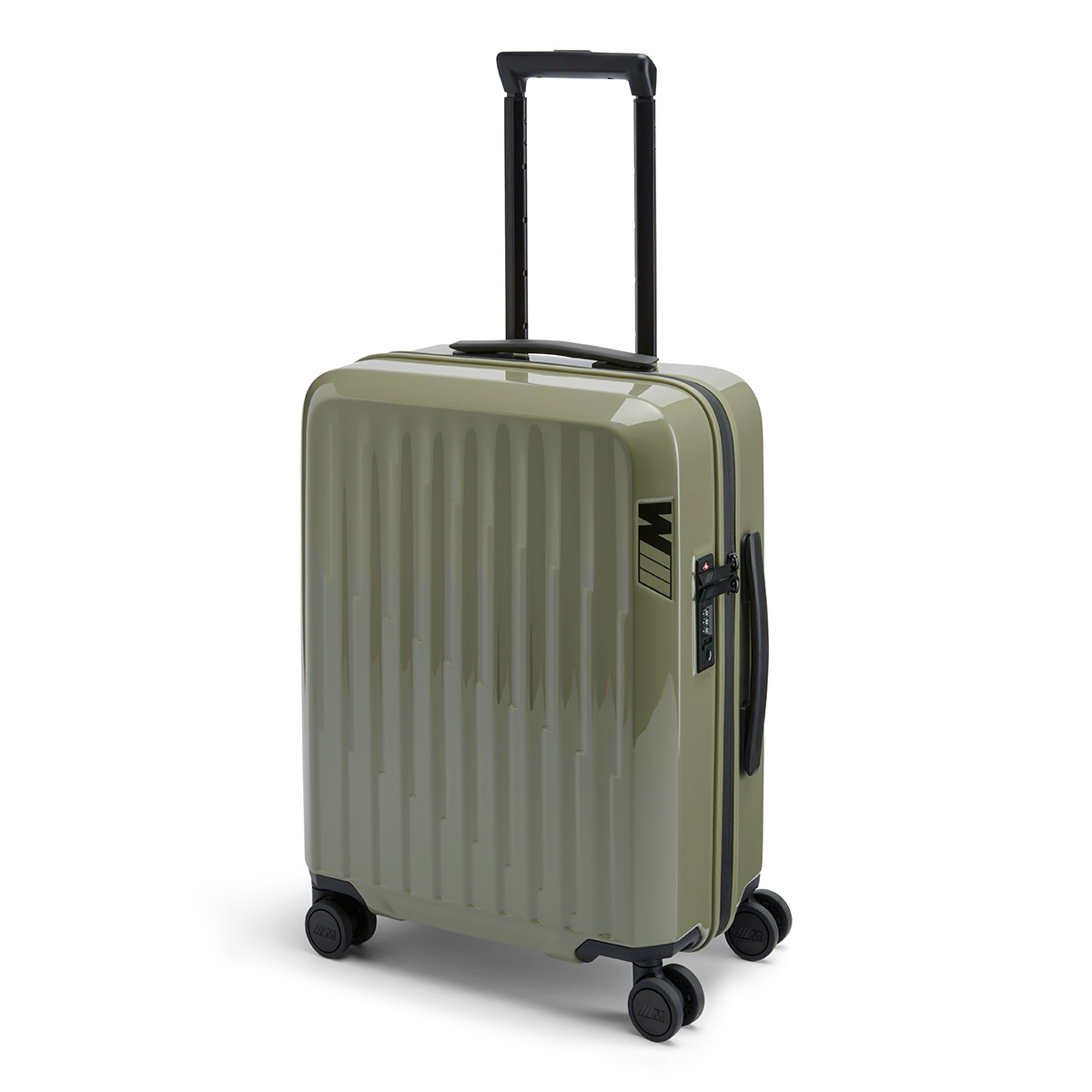
You won’t have trouble spotting this chic khaki-green BMW M Boardcase ($307) at airport baggage carousels. The high-performance “M” logo is etched on the durable polycarbonate casing, as well as on the main compartment zipper and all four of the sturdy double wheels. Comes with recycled lining, along with laundry and shoe bags.
Ford Yoga Gym Bag

The Ford Yoga Gym Bag ($15) has a wide handle and button strap to securely carry a yoga mat, as well as convenient pockets to stow water bottles and shoes. Made of black polyester, with reflective silver Ford logo. (Yoga mat not included.)
Kia Mini Lamp with Speaker/Sound
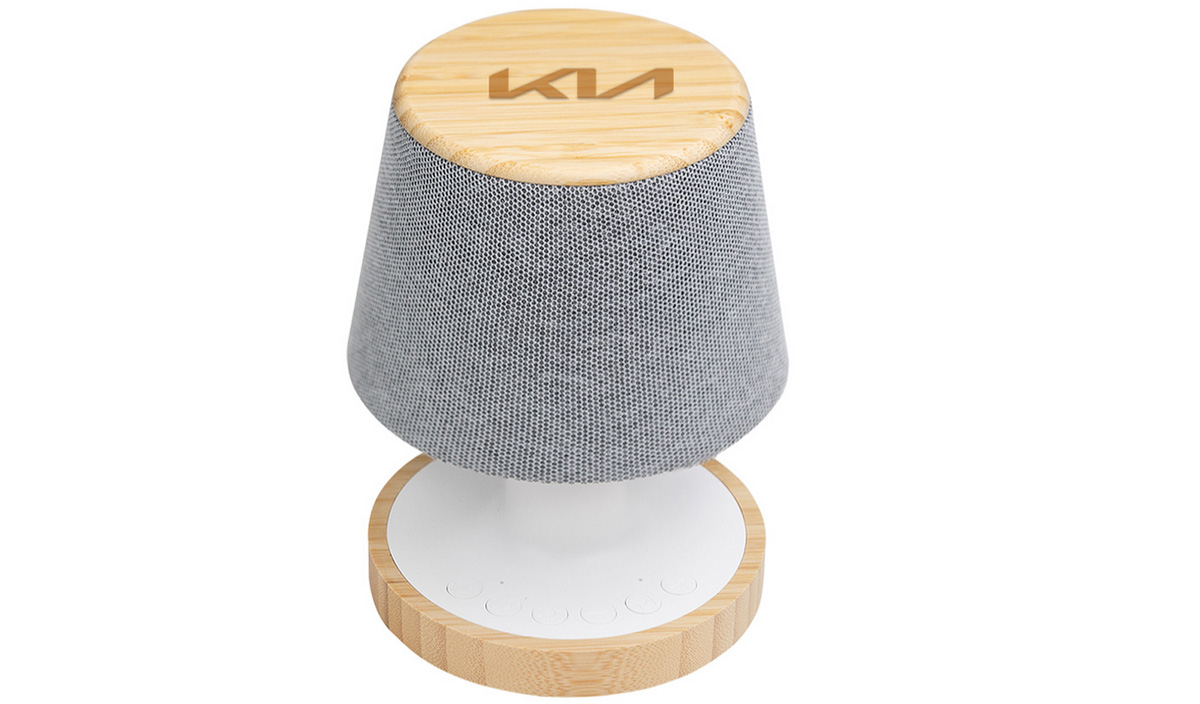
It doesn’t get much more Zen than a Kia Mini Lamp with Speaker and Sound Machine ($50). Made of bamboo, sturdy plastic and a fabric grill, the tiny wireless lamp has LED lighting with three settings. Pair with your phone to choose from eight soothing sounds: brook noise, bird chirp, forest bird, white bird, ocean wave, rainy day, wind and fireside.
Lexus Green Pro Set
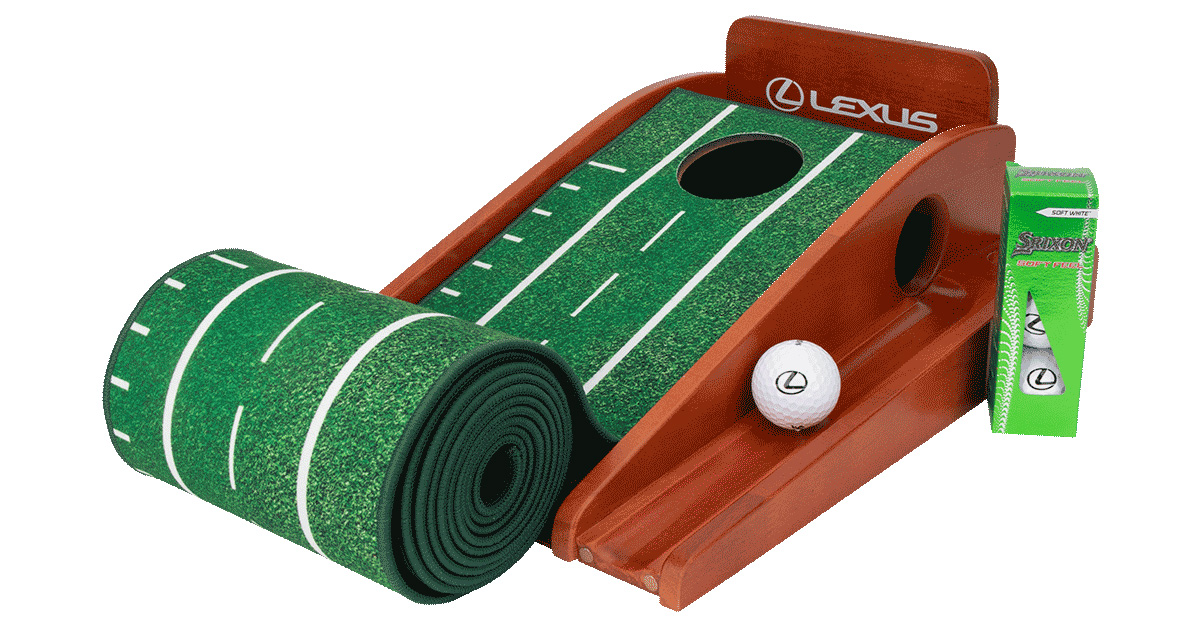
Practice makes perfect with the Lexus Green Pro Set ($257), a putting mat with “train-track markings” to help improve any golfer’s alignment. Lexus logo on the wood frame with automatic ball return.
Lamborghini Wireless Headphones
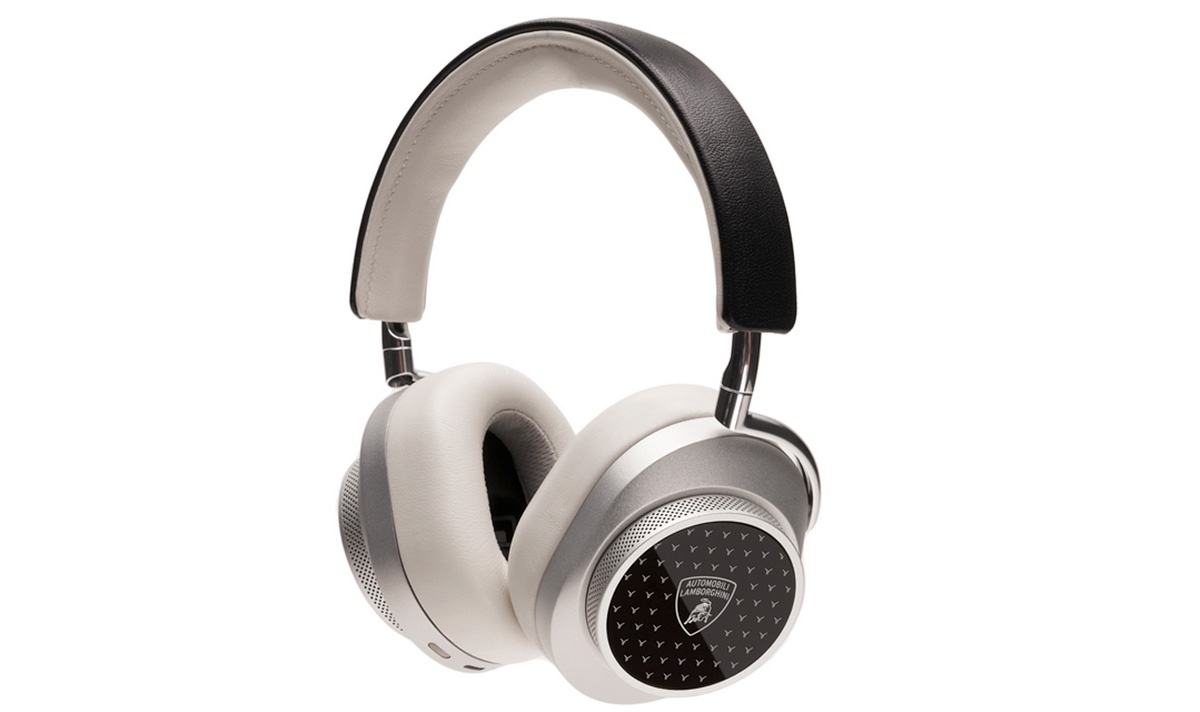
Turn on, tune in, drop out—well, at least at the end of a hectic day—with these Lamborghini Wireless MW75 Headphones by Master & Dynamic ($901). Batteries last up to 32 hours or up to 28 hours in active noise-canceling mode.
BMW Quatro Slim Travel Tumbler

The BMW Quatro Slim Travel Tumbler ($23) lives up to its name: sleek, smooth and scratch-resistant. Comes with leak-proof lid and non-spill design.
Ford Vintage Mustang Ceramic Mug

Giddy-up each morning with the Ford Vintage Mustang Ceramic Mug ($29). With cool blue stripes, the 14-ounce mug features a silver handle and iconic pony emblem.
My First Lamborghini by Clementoni
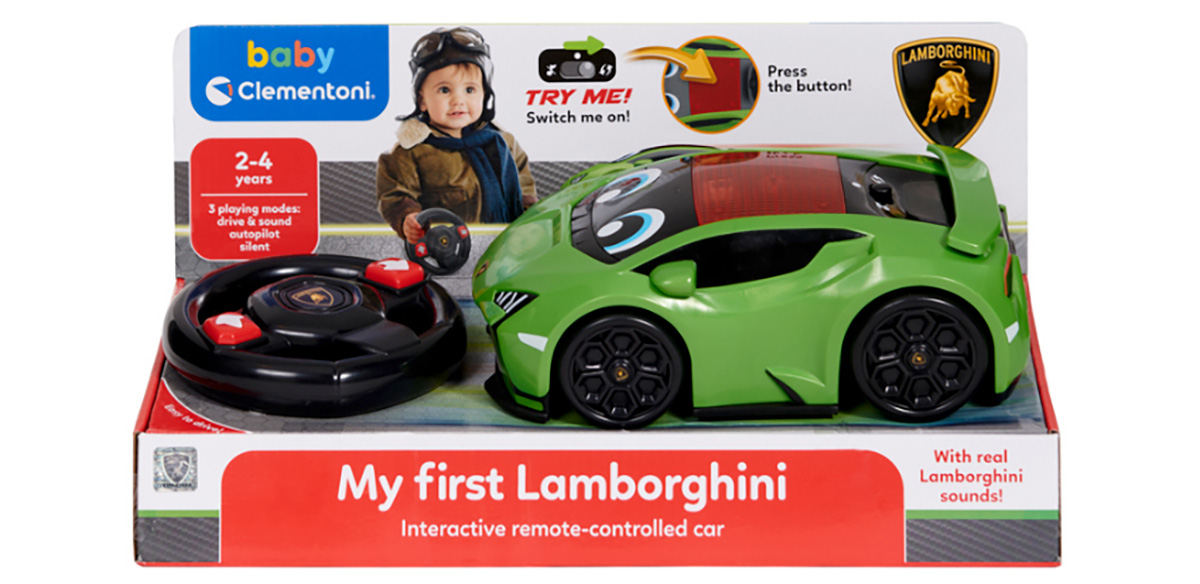
Proving it’s never too early to drive an exotic car, My First Lamborghini by Clementoni ($62) is for children ages two- to four-years old. Kids can activate the remote-control car by pressing the button on the roof or by using the remote. This Lambo certainly is less expensive than an entry-level Huracan, which starts at $250,000.
Rolls-Royce Cameo

For adults looking for their own pint-sized luxury ride, there’s the Rolls-Royce Cameo ($5,500). Touted as a piece of art rather than a toy, this miniature collectible is made from the same solid oak and polished aluminum used in a real Rolls. As with those cars, this one even has self-leveling wheel-center caps (which operate independently of the hubcaps so that the RR logo is always in the upright position).
Maserati Notebook
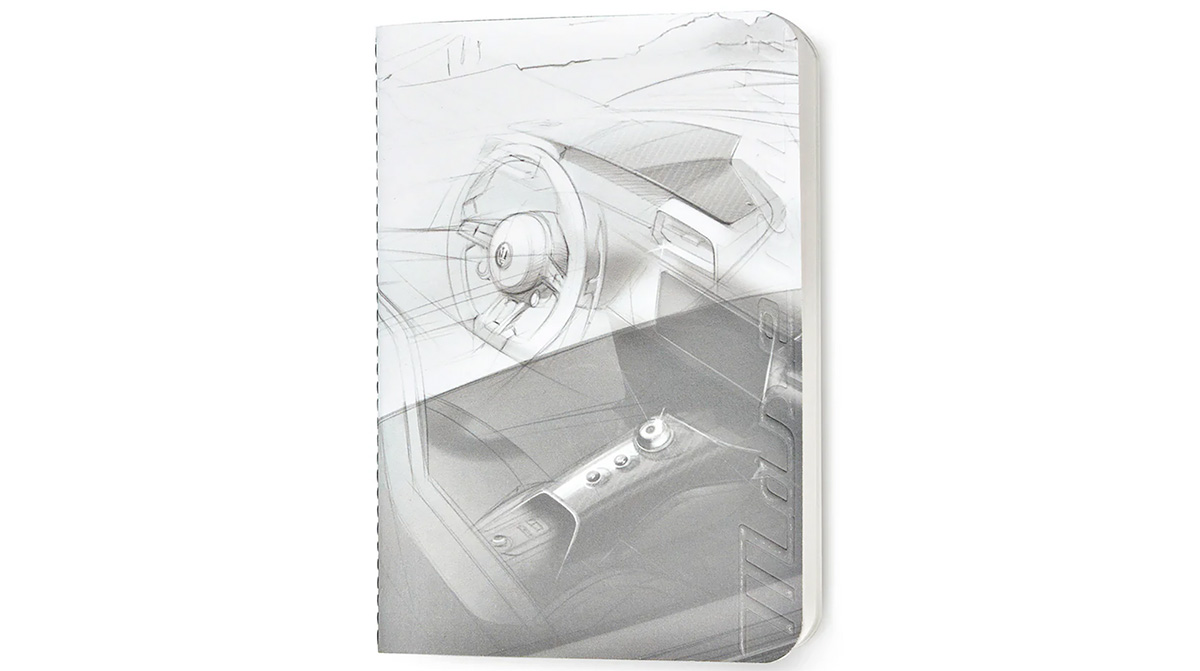
For those of us who still love the art of writing, the Maserati MC20 Sketch Note ($11) is an elegant notebook with 48 sheets of high-quality paper. The front and back covers feature stylish sketches of the interior of a Maserati MC20 supercar and the Maserati logo. Comes with saddle-stitched binding using black thread.
Dodge Demon Dog Collar
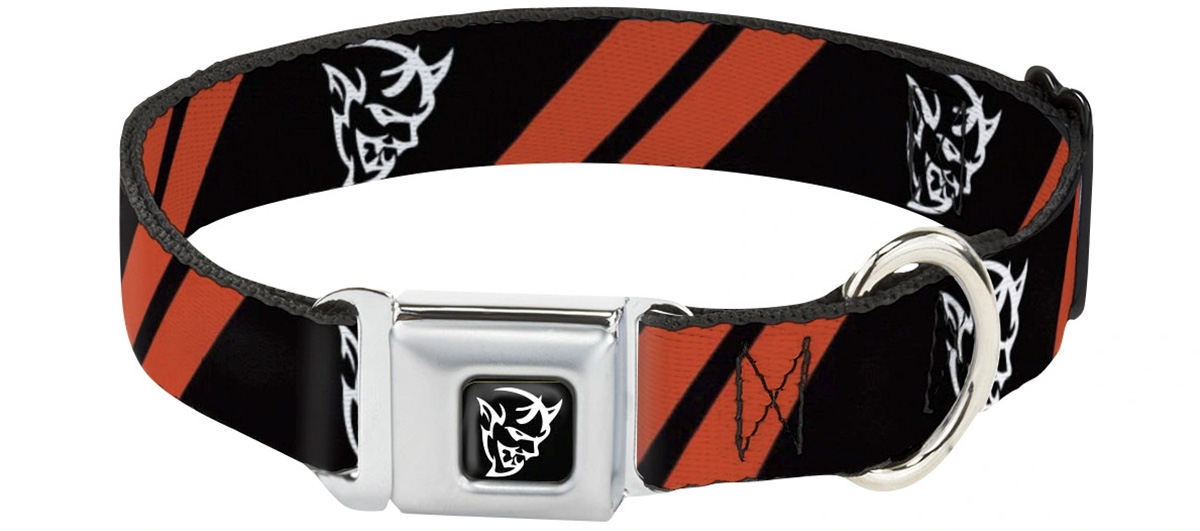
If your pooch is more Fluffy-kins and less the guard dog you sometimes need it to be, then there’s the Dodge Demon Seatbelt Buckle Dog Collar ($30). Made of steel and high-density polyester with a tiny seatbelt-buckle clasp, the collar is emblazoned with devilish Dodge Demon logos.

After a brief hiatus that started in late 2023, the Chevy Bolt—once a practical wallflower in the EV world—arrives back in showrooms in early 2026. It’s now sleeker, sassier, and less expensive than ever. And why not? Saving the planet should be affordable — and look good on Instagram.
CHEVY BOLT
$29,000
Range: 255 miles
0 to 60 mph: 7.5 seconds
Cargo space: 16.2 cu. ft.
Pros: Shapelier styling. Faster charging. Wallet-friendly price.
Cons: No speed demon. No AWD option. Modest towing capability.
If the previous Chevy Bolt was like a dependable friend who didn’t exactly turn heads, the new version has had a queer awakening. Still practical? Absolutely. Still efficient? You bet. But the exterior now boasts a sharper, wider stance, with slimmer headlights and punchier details that scream confidence instead of compromise.
Charging speed—which was anemic before—is significantly faster: roughly 100 miles in just 10 minutes at a fast-charging station. If you’re on a longer road trip and need to reach up to 80% battery capacity, it takes just 26 minutes—which is less than half the time of the previous model.
Range sits around 255 miles, so you’ll have no problem making it from your downtown apartment to that weekend cabin getaway—or your ex’s new city, if you’re feeling chaotic.
Regenerative braking is also improved, recapturing more energy for better efficiency and the ability for seamless one-pedal driving. In fact, lift your foot off the pedal and you can now come to a complete stop without touching the brakes.
As for speed, there’s now 210 horsepower—perfect for zipping through traffic (and faster than the Bolt’s archnemesis: the Nissan Leaf).
Overall, the ride is composed and confident—smooth over bumps, whisper-quiet, and surprisingly fun. No, this is not a performance diva, but it’s got lowkey swagger.
Inside, the Bolt is all grown up: cozy, modern and uncluttered, with soft-touch materials and ambient lighting that can match your mood. The cabin feels designed for people who appreciate good design—and good lighting for selfies.
There’s also enough tech to impress gadget-loving friends without being overwhelming. A massive, curved touchscreen runs Google Built-In, so your Maps, Assistant and playlists are always ready to go. Apple CarPlay and Android Auto are still here, and the interface feels logical, polished and just a touch playful.
And the suite of safety features is impressive: automatic braking, lane-keeping assist, blind-spot monitor, 360-degree camera, parking assist—it’s all here. But the crown jewel is Super Cruise, GM’s hands-free driving system that can take over on thousands of miles of highways. Forget route planning or battery-range concerns, this high-tech system does it all for you—including automatic lane changes on compatible roads.
Headroom and legroom are more than decent, especially for front-seat passengers. But for serious shopping mavens, rear cargo capacity is basically average. Luckily, the Bolt’s stowage quickly balloons to three times the size with the rear seats folded. (CityCenter, her I come!)
If the first Bolt seemed like that sweet environmentalist who handed out reusable straws, this one’s their supercharged offspring—still saving the planet, but now with a jawline and a Spotify playlist that slaps. It feels like an EV that makes sustainability something to celebrate, not tolerate.
To me, you could say the Bolt didn’t just come back — it came out, fully charged and ready to shine.

The BMW X4 and its spicy sibling, the X4 M, are like that annoying A-list couple: One’s got the sleek, stylish look that turns heads, and the other is the high-energy dancer in six-inch heels who just won’t leave the stage. Both deliver, but in different flavors.
BMW X4
$57,000
MPG: 21 city/27 highway
0 to 60 mph: 6.2 seconds
Cargo space: 18.5 cu. ft.
PROS: Effortless acceleration. Easy handling. Elegant looks.
CONS: Eensy-weensy side-door storage. Vexing electronics.
The BMW X4 compact SUV is all about presence—a sloping roofline screams “crossover coupe,” while the refreshed front fascia exudes enough attitude to feel modern without overdoing it.
Inside, the X4 is full glam. Cabin materials lean upscale, with form-fitting, multi-adjustable seats that are heavenly. And optional upholstery colors go beyond basic black. Think mocha brown, oyster beige and even a bold red if you’re feeling extra smart.
A curved display sweeps across the dash like an opera diva, with a nice mix of touchscreen and dial controls. But while some drivers may swoon over the nav system’s adaptive map mode—which enlarges the view on the screen automatically every time you approach a turn, intersection or merge lane—it took some doing for me reset the monitor to the old-school static view I prefer.
Performance-wise, the base model—the xDrive30i—starts with a turbocharged four-cylinder (good for 248 horsepower). But the real sweet spot is the six-cylinder xDrive40i, which pumps out a robust 382 horses. This is not a sports car, but it sure is playful—like a friend who insists on karaoke after midnight and somehow nails every note.
Handling is sharp for a crossover, thanks to BMW’s all-wheel drive and well-tuned suspension. But while the sharply angled roof sure is sexy, it also means limited rear headroom and cargo space. Luckily, the stowage expands to almost three times the size by folding down the backseats.
Of course, buyers aren’t choosing the X4 because it’s an overt hauler. They want intriguing looks and, well, an ego boost. I found this Bimmer to be daring enough for date night, practical enough for groceries and fun enough to take on twisty back roads.
BMW X4 M
$81,000
MPG: 15 city/20 highway
0 to 60 mph: 3.9 seconds
Cargo space: 18.5 cu. ft.
PROS: Exhilarating power. Exotic feel. Elegant lines.
CONS: Anemic fuel economy. Excessive sticker price.
If the BMW X4 is like your chic brunch buddy, then the high-performance X4 M is the club friend who orders tequila shots for everyone and convinces the DJ to play Beyoncé’s “Renaissance” front to back. This thing is drama—in the best way.
Under the hood, the X4 M packs BMW’s beloved 3.0-liter twin-turbo inline-six, tuned for 473 horsepower. In the Competition trim level, you get a staggering 500 horsepower and can fly from 0 to 60 mph in as little as 3.2 seconds. (Yes, that’s quicker than some exotic race cars. But for me, driving either one of these bad boys was like voguing down a runway in broad daylight.)
The styling cues crank things up, too: aggressive air intakes, quad exhaust tips, performance wheels and a slightly angry stance. The X4 M doesn’t just look sporty, it seems to be challenging every vehicle out there to a dual. Inside, the M-specific touches—sport seats, carbon-fiber accents and customizable drive modes—reminded me that this isn’t just another pretty face.
On the road, this BMW is absolutely thrilling. Steering is precise, grip is endless and the engine’s growl feels more Broadway belter than coffeehouse crooner. Sure, the ride is firm—not exactly built for Sunday yoga Zen class—but that’s part of the appeal. Anyone shopping this car wants intensity.
Alas, practicality does take a hit. As with the regular BMW X4, rear cargo area is tight. And eco-conscious drivers will be put off by the low fuel economy here. But let’s be real: no one buys an X4 M for Costco runs. They buy it because of the over-the-top performance and panache—and just enough utility to make sense.
IOW, the X4 M is for extroverts, people who thrive on making an entrance. If the standard X4 is your sophisticated weekday outfit, the X4 M is your sequined Saturday night.
-

 Politics2 days ago
Politics2 days agoLGBTQ Democrats say they’re ready to fight to win in 2026
-

 District of Columbia2 days ago
District of Columbia2 days agoBrian Footer suspends campaign for Ward 1 D.C. Council seat
-

 Chile5 days ago
Chile5 days agoFar-right José Antonio Kast elected Chile’s next president
-

 Opinions3 days ago
Opinions3 days agoLighting candles in a time of exhaustion

